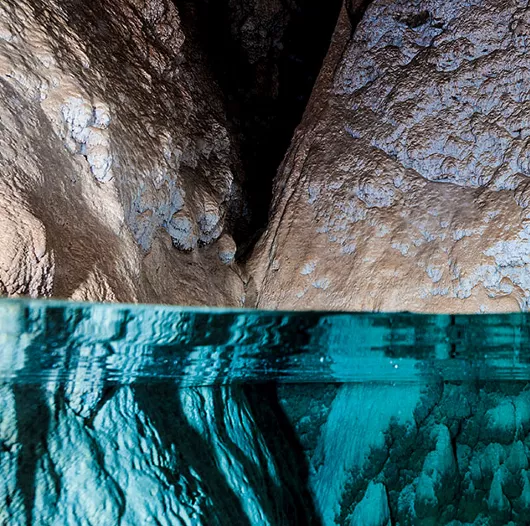The Need for Virtual Water and Aquifer Sustainability


Virtual water is the water that is used to produce goods and services. And the virtual water trade is the hidden flow of water in food and other commodities which is traded from one place to another. The term was coined in 1993 by Dr. Tony Allan, a geographer and Middle Eastern specialist, who realized the importance of understanding value of the water needed to create produce and goods, as much as the physical amount of water within them.
Using this concept, water-stressed countries were able to overcome water scarcity in their environment and economies by importing food grown in countries where water was more available. Virtual water was initially viewed as a sustainability concept, as a tool to overcome the unequal distribution of fresh water. UN environmentalists say that half of the world’s fresh water can be found in only six countries. Unfortunately, the implementation of this concept may have the opposite effect.
Water is essential for life. Two thirds of our body is made of water. Nothing can live without water and not much can be made without the use of water. The water we have on earth has been here since the beginning of time, and that’s all we will ever have. Water cycles through our world, from the bowls of the earth to the vapor in the air that eventually freezes in the atmosphere and falls back to earth as rain or snow and replenishes our lakes, and reservoirs, and oceans as liquid water and eventually seeps down into the aquifers below our feet until we pump it out of the ground, or a volcano spews it out as vapor.
According to the U.S. Bureau of Reclamation only 0.5% of the worlds water is available fresh water. A larger percentage, 0.62% is underground in aquifers which can be accessed through wells. But aquifers are not a sustainable source of water since it may take centuries for water to filter down through the cracks between the rocks. Once it is brought up to the surface, it evaporates and comes down as rain or snow and most of it drains into the ocean and becomes salt water.
More and more of the water in aquifers is being pumped out for use in agriculture. According to the Nature Conservatory about 70% of groundwater withdrawn globally—including in the U.S.—is used for agriculture. In some arid countries, 90% of groundwater is used for irrigation. In most jurisdictions the use of this valuable resources is not restricted. In the U.S. anyone who owns land has unlimited access to the water under it.
Saudi Arabia has banned the growing of water intensive crops like alfalfa which is needed to feed livestock. While this may solve a water problem in Saudi Arabia, they still need alfalfa. To solve this problem, they are buying land in the United States, where they can drill wells to grow alfalfa and export it to Saudi Arabia to feed their livestock. The water they consume is virtual water or the indirect use of water. American farmers are doing the same thing. Over 70% of the produce grown in the central valley of California, where much of the ground water is used, is exported to other countries. The export of virtual water is a very profitable business.
I live in Northern California and often drive down highway 5 through the central valley to visit relatives in Southern California. Over the years I have seen that 300-mile stretch of arid land transform from pastureland and stockyards to orange and pistachio orchards to vineyards and recently hemp for the new CBD market – all fueled by the availability of water. At first, I was delighted by the transformation from what was essentially a desert to a green and bountiful Eden until I heard the cost in terms of water. Most of the transformation came from well water.
So much water is being pumped out that many wells are running dry and new wells are being dug hundreds of feet deeper. The ground is settling a foot a year as the empty aquifers collapse making it harder for rainwater to recharge the ground water.
The leading exporter of virtual water is India through their export of rice and sugar cane. These exports are vital to their economy but require a lot of water. According to the World Bank, India is one the most water-stressed countries with 18% of the world’s population but only 4% of the world’s water. The continued export of virtual water will have dire consequences in the future. Unfortunately, rice and sugar cane cannot be grown in countries which have a lot of water like Norway.
The use or miss use of virtual water and the impact on aquifers is a growing sustainability problem. Hitachi technology can help to make more efficient use of virtual water and provide IoT monitoring of the use of virtual water, but the sustainable use of Virtual water and the sustainable use of aquifers will require legislation and economic incentives. As a technology provider we can only sound the alarm.
In 2014, California passed a law regulating the use of groundwater – the resource on which 85% of its population and much of its $50B agriculture industry rely. It calls for local agencies to develop plans for ground water sustainability to be implemented by 2040. Unfortunately, 2040 may be too late as agriculture companies appear to be increasing their use of ground water ahead of the implementation date. The limitations on ground water use in 2040 may cause up to a million acres of farmland to be left fallow. At least California is aware of the problem which requires them to make some very hard choices.

Hu Yoshida spent 24 years at Hitachi Vantara helping define technical direction and enabling customers to address their digital transformation needs. He is widely known in the industry and was instrumental in evangelizing Hitachi's unique approach to storage virtualization.